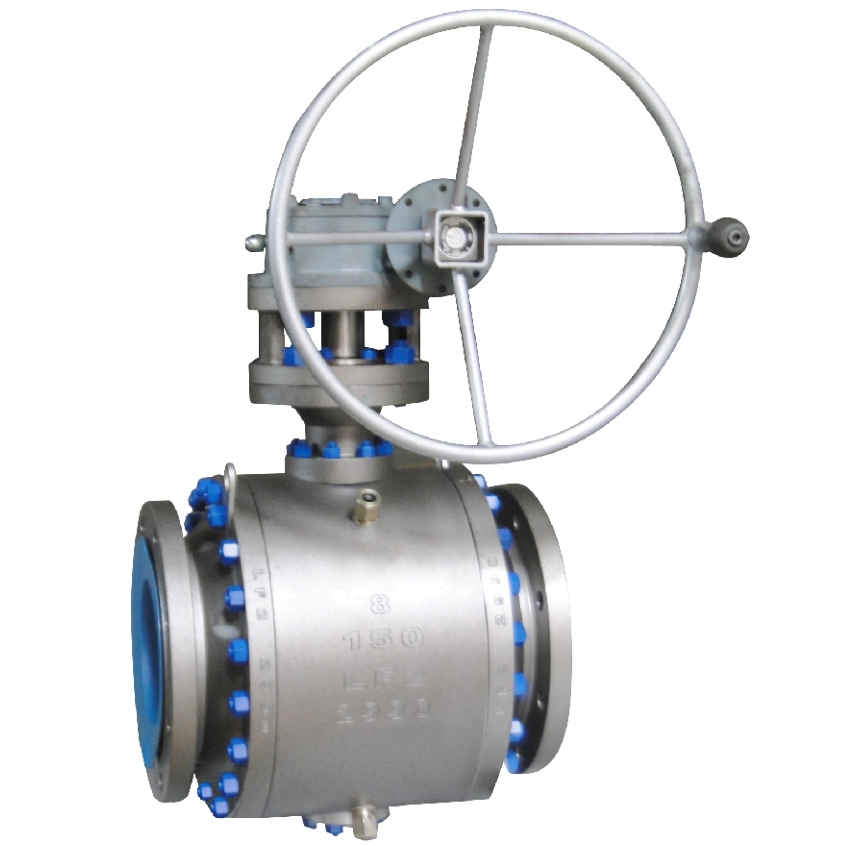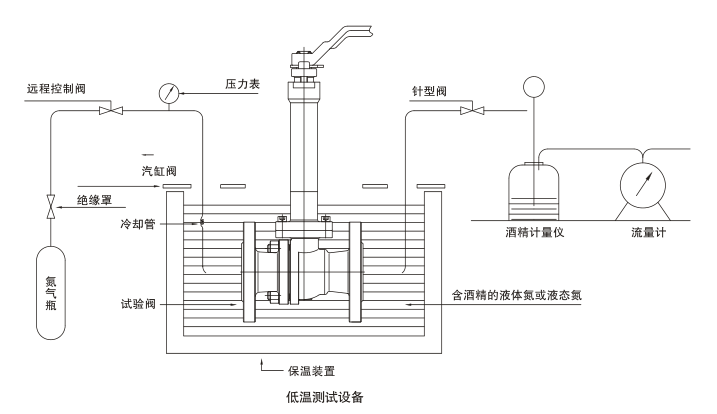The worm gear low-temperature LF2 flange ball valve is a ball valve used for low-temperature applications, especially suitable for extremely low temperature environments. Its main feature is that the valve body and seat are made of low-temperature material LF2/LCB, and a worm gear operating mechanism is used to achieve switching. Low temperature ball valves are commonly used in chemical equipment for transporting materials such as ethylene, liquid oxygen, liquid hydrogen, liquefied natural gas, etc. These flammable and explosive media will undergo vaporization reactions when the temperature rises, causing their volume to expand hundreds of times, and the characteristics of easy permeability and leakage of the media increase the difficulty of processing.

The pressure bearing part of the valve can withstand the expansion and contraction of the medium at different temperatures, and the sealing structure of the valve remains unchanged under temperature changes. In order to ensure the normal operation of the valve at minus 100 ° C, the pressure bearing parts of the valve need to undergo cryogenic treatment after processing. That is to say, the pressure bearing parts are first cooled in a liquid nitrogen box. When the temperature drops to minus 196C, they are kept warm for 1-2 hours. Then, they are removed and placed at room temperature, and the above operation is repeated.
2. The valve cover is a long neck structure that ensures the function of the packing box is not damaged, keeping it away from low temperatures and ensuring good sealing performance. In addition, insulation materials are configured to prevent the loss of cold energy. The length of the neck depends on the temperature of the medium and the thickness of the insulation layer material. When the sealing performance of the packing decreases, injection cooling can form an oil seal layer inside the packing box, reduce pressure difference, and enhance the reliability of the seal.
To serve temperatures below minus 100 ° C, the valve stem must be chrome plated or nitrogen plated to enhance the hardness of the sealing surface and the reliability of the packing seal.
4. The low-temperature ball valve adopts a structure that avoids abnormal pressure rise. When the medium in the low-temperature ball valve vaporizes and the volume rapidly expands, the pressure will rise to a high point, and the pressure in the valve chamber will increase, which will flow with the pressure at the outlet. Alternatively, installing a pressure relief valve at the outlet can ensure the safe use of the valve.
5. The gasket used in low-temperature ball valves can achieve independent sealing function under normal and low-temperature conditions, or in situations where temperature is variable.

1. Structure and composition: - Main body valve body: usually made of low-temperature material LF2 (low-temperature carbon steel), with flanges for connection with pipeline systems- Sphere: Spheres are usually made of corresponding low-temperature materials to ensure durability at low temperatures. The sphere can be rotated by a worm gear operating mechanism to control the flow rate and direction of the fluid- Operating mechanism: The worm gear operating mechanism is used to rotate the ball to control the opening and closing degree of the valve. This allows the valve to be easily operated in low-temperature environments- Sealing device: The valve seat and sealing ring are usually made of low-temperature resistant materials to ensure reliable sealing at low temperatures- Flanges: Flanges comply with relevant standards to ensure compatibility with other components in the piping system. 2. Working principle: The working principle of the worm gear low-temperature LF2 flange ball valve is to control the flow direction and flow rate of the fluid by rotating the ball. The worm gear operating mechanism is used to manually operate the sphere, and precise opening and closing control is achieved through the worm gear transmission mechanism. 3. Features and advantages: - Low temperature adaptability: This ball valve is specially designed for low-temperature applications and can work normally at extremely low temperatures- Low temperature resistant materials: The key components of the valve, including the valve body, ball, seat, and sealing ring, are all made of low temperature resistant materials to ensure performance and reliability in low temperature environments- Worm gear operation: The worm gear mechanism provides highly precise control, suitable for low-temperature processes that require precise flow control- Flange standards: Flanges typically comply with relevant standards in order to be compatible with other standardized pipeline components, simplifying installation and maintenance. 4. Application areas: Worm gear low-temperature LF2 flange ball valves are widely used in the following fields: - Low temperature liquid storage and transportation: used to control the flow of low-temperature liquid nitrogen, liquid oxygen, liquid argon, etc., such as in low-temperature storage tanks and transportation pipelines- Liquefied natural gas (LNG) industry: used for process control of LNG, including LNG production and storage- Low temperature chemical industry: used in chemical processes to control low-temperature processes, such as ethylene and acetylene production- Low temperature research laboratory: used in scientific experiments and research to control low-temperature media in low-temperature laboratories. In summary, the worm gear low-temperature LF2 flange ball valve is a specially designed ball valve for low-temperature applications, featuring low-temperature resistant materials, worm gear operating mechanisms, and flange standards. It is suitable for process control requirements at extremely low temperatures such as liquid nitrogen, liquid oxygen, and liquid argon.